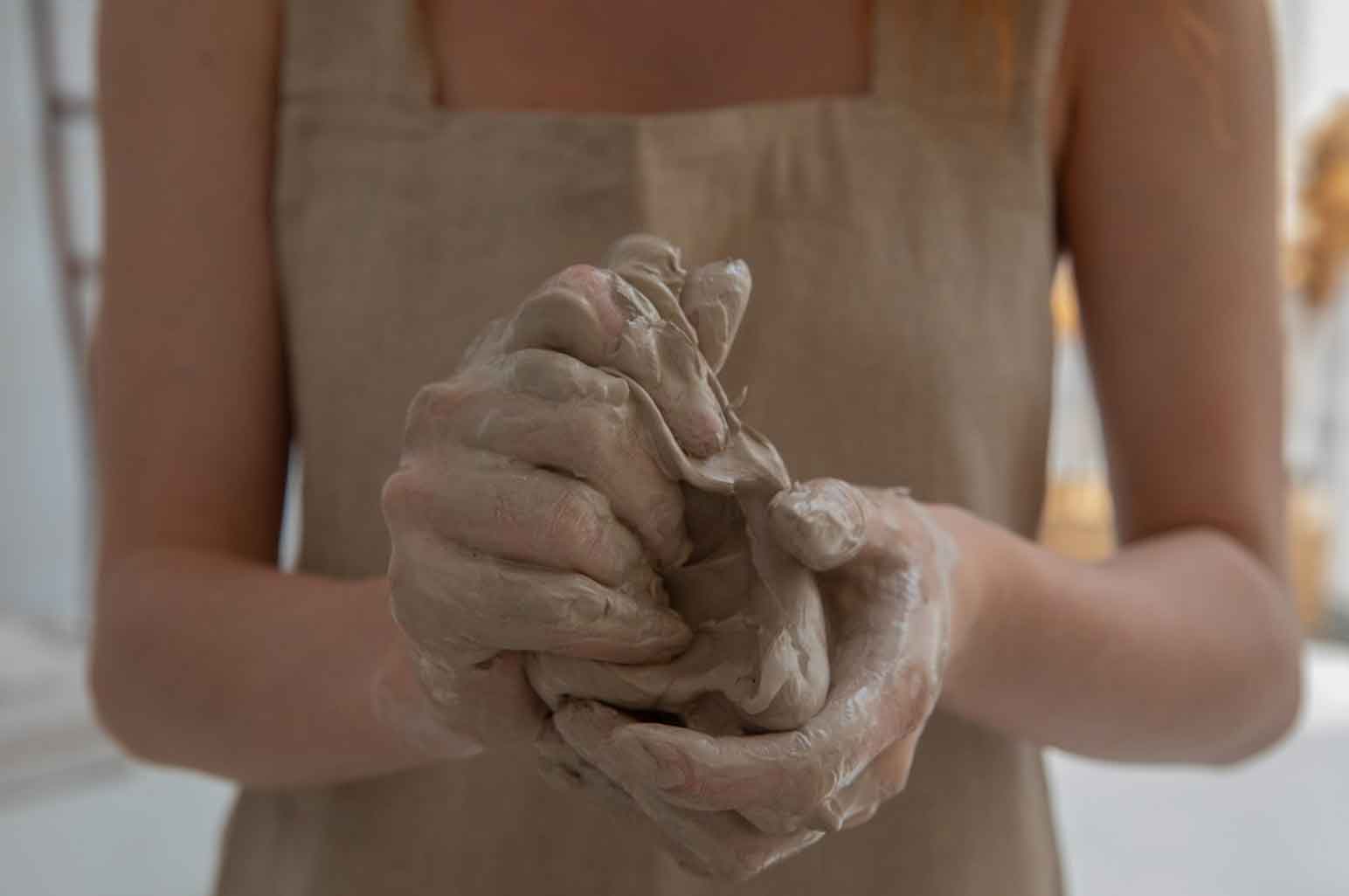For thousands of years, humans have been using clay to make sculptures – figures, ornaments, and crockery. Clay sculpting is an inexpensive, family-friendly hobby – and totally underrated!

Being the easiest and most common way to learn sculpting, clay is forgiving and fun to use. With endless interesting tools and techniques, clay may be an artistic expression you’ll love. If you’re new to clay work and want to know how to get started, you’ve come to the right place. Here are some things you’ll need:
GREAT WORKSPACE
First, you will need to find a comfortable space to do your work. Find a workbench or table which has a strong surface; and one which you can easily clean. It’s vital that your desk is at working height, as your posture should be relaxing and not hunched over your table. There should also be enough space for you to keep tools and materials within easy reach, but not feel cramped.
WORKING MATERIAL
It’s crucial that you find a clay that works for you. There are many different types of sculpting clay, but they vary in whether they are oil-, water-, or polymer-based. The type of clay you use will impact the versatility, handleability, and drying time of your pieces. It is recommended that water-based is best for beginners, but personal research before you get started will help you work out which is best for you and your project-desires!
TOOLS, TOOLS, AND MORE TOOLS!
There are various ways of creating your clay structures and depending on what you’d like to create, a potter’s wheel or an armature stand might be more appropriate. Either way, you’ll need something to hold your pieces for the duration you’re working on them.
If you’re creating an armature, it’s a great idea to have a drawing or image of what it is you’re making. With your image, you can directly lay your armature on top of it throughout its development to ensure that the aluminum wire is within correct measurements and to scale. You don’t have to draw either, as there are lots of templates available for various structures online!
In terms of the actual tools you can use during your clay sculpting process, the possibilities are endless! Not only are there incredible modeling tools available in stores and online, but you can even make tools from objects you have lying around the house. Any object that can create interesting textures or patterns can be used as a tool.

HAVING A VISION
In creative arts, it’s always fantastic to have a vision for your final piece. What would you like to create? If you could make anything, what would you want it to look like? With art, it is your unique creation; and no pieces can be right or wrong.
If you’re struggling to envision a clay piece in your head, this is normal. With more experience will come more creative expression. Look around you to see if you could use real objects around you as inspiration. Interesting shapes, sizes, and textures can stimulate those creative juices, so let your mind run wild!
Going on sites, like Pinterest, can also help you get clay art inspiration for your pieces! You may also like to go to a library to find artists whose work inspires you. Alternatively, search the internet for fascinating clay artists or notable artworks that you enjoy. These will give you more ideas around your creative style, which will definitely assist future projects as you improve.
KEEP LEARNING!
It’s important that you enjoy your creations and stay motivated to complete each piece. What will help in keeping you motivated is your passion to learn more. Though it may be easy to get started at first clay sculpting is a skill that takes hours of practice, honing your skills, and continuous learning to become fantastic
Staying committed to improving your art, even if it is just a hobby, is one way you’re sure to enjoy your work much more! If you’re stuck on how to improve your clay figure, take a photograph of it from different angles or look at it in front of the mirror. This activity helps ensure your figure looks proportionate from all sides and gives you a snapshot of which parts you could fill, texture, smooth out, or better shape.
There are extensive online resources available with tips – like the one above – to help you figure out how to improve. For instance, you could even sign up for a course at your local studio or find a sculpting teacher near you!
It’s important that you stay patient: don’t judge your ability too soon and if you’re enjoying this hobby, keep going!
